
by Dave Cooper | Dec 26, 2022 | A2R, Advanced Recovery, Communication, Families, Theory
Addiction and reverse addiction in film
It always amazes me when I see art reflecting the deeper things in life, particularly in film. Patterns and themes that can often take therapists years to learn and recognise are often portrayed by artists with no training or apparent expertise. These themes and traits are often included in their work primarily as observations from the life of the artist themselves and are all the stronger for that. In this post I am going to take a look at the main theme of my work, which is the family pattern of addiction and reverse addiction. And the way I see this reflected in storylines of Films and TV series. Particularly in the way people caught in this pattern, attract each other, live with each other, affect each other and frustrate each other.
Addiction and reverse addiction as relationship patterns
Years before my own recovery, it was obvious to me that certain people would react to me more favourably than others. Whilst some would clearly be affected by some form of empathy around my ‘problems’, others would be unaffected (I thought they were cold) and would say I had a ‘chip on my shoulder’. I also noticed a tendency to ‘flip’ or change my personality depending on who I was with. When I was with someone who was very giving and generous, I would tend to take advantage, whilst also developing a state of hoplessness. On the other hand, when with people who acted more selfishly, I noticed a tendency to feel responsible for their welfare, even down to shopping, cooking and cleaning
Although I did not understand it yet, and was still some years away from my own recovery, I was experiencing part of the pattern of addiction and reverse addiction. Years later, after I had recovered from my own addiction, I studied and became a therapist. This led me to an understanding of narcissistic tendency and co-dependence as medical terms. However, being trained as a systemic therapist, I did not see these things as conditions. Instead, I learned to use communication theory as a way of recognising patterns and themes around the way people engage in relationships.
Moving away from simple medical diagnosis
Using my own experience as well as my training, I learned to see issues as things co-created in relationships, rather than immutable personal traits or conditions. In other words, that the way we are is, at least partly, contingent on who we are with. It is from this perspective that we can relate the positions of addiction and reverse addiction more closely together. As opposed to unrelated ‘conditions’ such as addiction and codependency.
As I started to develop these ideas in my practice and rehabs I worked in, I started to notice a great deal of consistency in the way people were attracted or repelled by each other. So this started to make sense to me based upon their history and tendency. For instance, an addict that had been extreme in their behaviour will tend to attract an extreme reverse addict. Whilst a more high functioning addict who has no history of drifting into chaos, will tend to attract someone with a milder form of reverse tendency. In other words, there is a form of unhealthy balance here which is unconscious but extremely consistent.
My main aim in this post is to look at the examples of this pattern in film and TV. There are many examples so I will restrict myself to three, one film, one TV series and one book. Finally I will look at the greatest example the world has been given, which is the story of the Prodigal from Luke 15 in the Bible. The purpose of introducing these ideas through mainstream media projects is to help you to see the patterns more clearly for yourself, and to use this understanding in your own recovery. There is no better way to gain a better understanding of something than to see it as part of a story. Let’s first look at a very current series Happy Valley, with the amazing Sarah Lancashire and Siobhan Finneran.
The purpose of introducing these ideas through mainstream media projects is to help you to see the patterns more clearly for yourself
Happy Valley
The pattern of addiction and reverse addiction is strongly present in the BBC series Happy Valley. There have been two seasons already produced with a third due to be aired on January the 1st. In the story Catherine Cawood (played by Sarah Lancashire) is a Police Sergeant in a small Yorkshire Town. Her Sister Clare (played by Siobhan Finneran), lives with her along with her grandson Ryan (played by Rhys Connah).
Initially not much is made of Clare’s addiction, it’s only later in the series (series two, episode two) that the complexity of the sisters relationship is exposed through the vulnerability of Clare when she is left at a funeral by Catherine for several hours. She gets drunk with the daughter of the deceased Anne Gallagher (played by Charlie Murphy) who is also alcoholic. This begins yet another chaotic night
There are many recognisable components of the above mentioned theme present in this series. Notice that when Clare gets drunk, it is when she is left for five hours at a funeral because Catherine is so busy trying to meet many other obligations. This weight of responsibility for others, felt by the ‘reverse tendency’ is a strong component of the theme and one of the main ways that reverse addicts become burned out. There often seems to be no defence for the reverse addict against the consistent needs/demands of the addict., and the continual pressure of meeting others needs.
This pattern is primarily seen inside a family and we always remember that Catherine and Clares attitudes were both born out of the same family, the same parents, the same upbringing. Any dysfunction in the family tends to pressurise the children into one or other of these extreme patterns. The interesting thing is why do people in the same family tend to go in apparently opposite directions? Whilst Clare became a heroin addict and did not manage to make any progress in her career, Catherine grew up with the huge burden of responsibility for others. This led to a career in the Police force and an unhealthy pressure of responsibility to be looking after others.
In the series Catherine is holding down a difficult Police Seargents role in a small Yorkshire Town. Underfunded and unsupported from upstream, she has chosen to step back from her detectives role in order to look after her Grandson. Left when her daughter commited suicide. She is also housing her sister Clare who is volunteering locally but not yet secure in her recovery. You might ask, “who made Catherine responsible for everyone else”? What makes Clare sometimes give up on everything and return to the drugs whilst her sister cannot leave her post? It is this bifurcation along family lines that is not natural, they were not born this way. It is the effect of dysfunction in the family.
Relationship construction
How we build relationships, and who we build them with, form another strong theme. Addicts and reverse addicts are like magnets, forming very strong attractions and repulsions. Because of the subconscious nature of this attraction, the unhealthy aspects of the bond are often not apparent until much later. If you ask someone who struggles with these things why they do what they do, they will often answer vaguely or with a somewhat glib reply. Those of you who have watched the series will see this in Catherines responses. The moral sense that they are supposed to do something is a force that is present in the brain more than the mind and, as such, is not easy to get to grips with. The good news is that the brain can be rewired.
It’s also important to review how you think about yourself. If your thinking is built on ideas like “I’m like this” or “I’m too much like that”, then there isn’t much you can do. However, if you can start to think of relationships as the way of understanding yourself, then you are opening up all kinds of possibilities for growth and development. Think about who you are in this, or that relationship, and why. It’s very noticable in this series that Catherine is very different depending on who she is with.
The moral sense that they are supposed to do something is a force that is present in the brain more than the mind and, as such, is not easy to get to grips with.
Explosions often become inevitable in the intensity of such unhealthy, unbalanced relationships such as the Sisters in this series. What the reverse addict sees as caring, helpful and necessary, the addict eventually experiences as restricting, smothering and controlling. Notice in the drinking scene how Clare is desperate for Catherine to “leave her alone”. This pattern or theme naturally strangulates over time to become an unbearable tension for both. The more the reverse addict notices the addict’s problems, the more they act to help. The more the addict perceives the help as controlling, the more they attempt to be free of it, and so on.
Flipping as a relational phenomenon
Following the intensity of the explosion in the relationship, the typical way Catherine and Clare relate is itself reversed, in other words they can ‘flip’ or swap positions. It is part of the pressure of the unhealthy balance. So, following the explosion we would tend to see reflection on behaviour. The addict might be concerned about the extent of their selfishness, the reverse addict eventually cracks under the pressure of meeting everyone else’s needs. Flipping then, is something that happens not only within an intense relationship but also, as a natural consequence of who we engage with.
Only when I laugh
In the 1981 film “only when I laugh” adapted from the play of the same name by Neil Simon, Georgia Heinz (played by Marsha Mason) is recovering from alcoholism. The story covers Georgia’s return from rehab and her attempts to return to her acting career. There are many great observations in this piece and several themes are present.
Notice in this clip from the movie, how the friend and the daughter go from lively animated chatter to a kind of limp lifeless silence once Georgia has left the room.
It was fascinating to me that in her interview with Bobbie Wygant Marsha confirms that she did not have alcoholism in the family, but had seen people who did not realise that they were embarrassing themselves with alcohol. Neil Simon grew up during the great depression and was said to have had a volatile upbringing with the family splitting up several times, but alcohol l was not the problem. So, again, they were derived from observation and human understanding.
Far from the madding crowd
I can’t finish this brief look at these patterns and themes without a mention of Mark Clark. A character most of us can recognise in our lives. In Thomas Hardy’s novel Far from the madding crowd, he introduces the character briefly.
“True, true; it can’t be gainsaid!” observed a brisk young man–Mark Clark by name, a genial and pleasant gentleman, whom to meet anywhere in your travels was to know, to know was to drink with, and to drink with was, unfortunately, to pay for.
In Hardy’s novel this character is portrayed as somewhat more universal, as if he would have the same effect on everyone. And there are some that appear to have this effect, but most people have different effects on different people.
The Prodigal.
The greatest example of this family pattern comes from the Bible and is found in the Gospel of Luke. In Chapter fifteen we read the story of the Prodigal Son. Possibly the most famous story in the Bible. Along with Noah and the flood, Adam and Eve in the garden, the Prodigal is so well known that people of all faiths and no faith are familiar with it.
Of course the typical way this story is taught and understood is in the context of the Fathers love for his sons, and this is clearly the main idea, but there is another underlying theme here and it is so important that when I am teaching counsellors and Church leaders about how to help people in their recoveries, I say that everything we need to know about addiction, rock bottoms and recovery is in this story! It’s all there if we dig a little deeper.
So we see all the usual suspects in this tale. Isolation, selfishness, poor decisions, chaotic behaviour and wild living. Rock bottoms and repentance. Acceptance and reconciliation. But wait! There is also another theme emerging right at the end! Look at the way the older son is so angry at the reconciliation that he refuses to go into the house. The Father goes out to him but he will not be comforted. This issue is so serious that we do not even see the resolution of it in the story.
Learning from our greatest teacher
Well, what is the older brother’s complaint? What is the problem? Shouldn’t he be happy that his younger Brother is back in the family? Well, if all his work, contributions and commitment were genuine, he would be. But his issue is exposed right at the end of the story when he cannot contain his resentment. He did not get the outcome all his efforts were aimed at. So here it is again. Two siblings from the same family, with the same Father, the same environment and the same history. And yet they grow up in completely opposite ways! One trys to gain acceptance and success by following all the apparent rules and meeting everyones expectations. Whilst the other escapes into selfishness and thinks only about what he can get! Looking at this story again through this apparently ‘modern’ lens is fascinating. It shows us that this family pattern has been around forever and will continue to emerge wherever families are formed.
I really hope that this brief journey into art and the way it has reflected life has given you some food for thought, Especially if this is a subject you are struggling with yourself. Our aim in recovery is to improve all our relationships. With everything, and everybody! This means achieving a balanced position in relation to our boundaries with others. This can be very difficult and take time, so be patient with yourself. Take another look at this post for guidance on balance and what it looks like.
Thanks again for taking the time to read this. All the best with your progress.

by Dave Cooper | Aug 20, 2021 | A2R, Families, Method, Theory
In this article you are going to learn about the way addiction develops in a person. How it always starts in the form of ‘reverse’ or ‘mirrored’ addiction. And why some people stay in the reverse position, whilst others develop into addicts. And why we all have the potential to ‘flip’ from one to the other. Why is this important to know? Let me answer this big question straight away. The reason this is so important is that once you understand the nature of your affliction and the reason why we sometimes ‘flip’ from one extreme to the other you will have the beginnings of a method of self management. Imagine being able to manage yourself better when your partner is in early recovery! When you are in early recovery! When things challenge you and you notice yourself behaving very differently from normal. This will help you whether you consider yourself to be an addict or a reverse addict because you will have a coherent picture to work with. And won’t that make a change!
We all start as reverse addicts
Once again the main difficulty in grasping this idea is our ability to get away from the medical model. In a ‘disease model’ you would, of course, be one thing or the other. You may have been to meetings or attended therapy and been told you are an addict, or you are co-dependent. Once you move on from this way of looking at things you will be free to understand yourself as having the ‘potential’ to be both. Think of how you are as more of a reaction to who you are with. If your are with a self centred so called ‘narcissistic‘ person you will have more of a tendency to flip to the reverse side of your behaviour and attitudes. Whereas if you are with a more compliant, vulnerable person you may have more of a tendency to flip to the addict side. More on this later, for now let’s look at the assertion itself and the way you can benefit from this understanding.
To understand the reasoning behind this assertion we have to look at the general effect of dysfunction in the family, especially on the children. Whatever type of dysfunction there is in the family it has the same general effect on the children, it places them in a position of responsibility they are not ready to deal with. It has the effect of pushing or dragging the child into the adult arena. Often the sense of responsibility is produced by the parent not taking responsibility for something. Having seen this lack the child then gets the idea that they have to do something about this. If the adult is not producing a meal for the children, the oldest child may take it upon themselves to make it. If the adult is not awake when it is time for the childrens school then they will take it upon themselves to dress and prepare the other kids. More seriously, if the adult is abusing the chldren physically they will take it upon themselves to protect their siblings. This is also true of drunken behaviour and drugged behaviour. As well as experiencing this dysfunction as their ‘normal’ they will make every effort to maintain normality within the family.
At the same time let’s not forget that children tend to blame themselves rather than their parents for things going wrong. It’s just too threatening for a young child to believe that there is something seriously wrong with their parents! So it must be their fault. This belief can transfer all the way into adult life causing many to not include their parents dysfunction in their efforts to make sense of their past.
“Whenever there is dysfunction in the family it has the same general effect on the children”
Let’s also remember that the children cannot leave, they must find ways of surviving their childhood. So the first step toward reverse addiction for our young developing child is to become aware of things going wrong in the family and to attempt to take responsibility for fixing them. As I said, this is true for the whole spectrum of dysfunction. All the way from mild personality traits in the parents, all the way up to serious abuse. Okay, so now let’s look at the effects of this situation on the child. What follows are a few of the serious legacies for the child as they grow up.
Okay, so if all that’s true, what is the effect of this premature responsibility? There are several effects, the first is something that lots of people take into their adult lives with them. This is the effect of ‘pretending’ to be an adult. As a young child when this dysfunction occurs they do not have the maturity or experience to deal with this new found responsibility, but they have seen adults and the way they look and act. So, later on, their adult life often involves lots of imitation rather than genuine maturity. This often shows up in professional life, particularly positions of responsibility such as management roles. It is the idea that the job requires a strong ‘role playing performance’ as well as the idea that this is done separately from the family and social life of the person that invites this form of ‘imitation’. It will tend to show up whenever you are given any responsibility over others. In some cases it can form such a strong part of your behaviour (especially if you spend a lot of time at work) that you can actually mistake it for who you really are!
But it’s not you! It is a form of imitation based upon your need to take responsibility as a child. It is often the basis of ‘workaholism’ and certain forms of OCD behaviour. There is a lot of coaching now on how to be more genuine and vulnerable at work. If you can use these principles you will find ways of bringing the ‘imitated self’ back into proportion.
The next effect is anxiety. The child has no experience to cope with this level of responsibility. So it always includes massive amounts of anxiety. This level of anxiety is experienced as normal when lived with over many years. So don’t expect it to be obvious to you when starting your recovery. Like a lot of us you may have to spend time raising your sensitivity to your feelings over time. Like all of these effects the impact on you is greater because you are at a stage of life where your brain is still developing and so your reactions are not sophisticated, they do not include much life experience and so you don’t question the anxiety or its origins. You just live with it and survive it.
Imagine being given a job that you didn’t apply for, with no interview, job description, induction or training. Now add that people you care about could be seriously harmed if you don’t get it right! Now make yourself seven or eight years old. I think you are getting the picture.
The next effect is the overbalancing towards care for others and away from self care. This is both the start of reverse addiction and the reason why we start with reverse addiction. Therefore lack of self care is one of the main components of all forms of addiction and one of the best ways of identifying it in yourself. Again this behaviour is ‘normalised’ as, under pressure to take responsibility for others, the reverse addict thinks less and less about themselves.
This overbalanced sense of responsibility can become a full time job very early on in life. As the child grows into an adult they often develop a belief that it is somehow wrong to look after themselves, or to consider themselves before others at any time, or in any way. These beliefs and practices have the dual effect of developing a tendency towards low self worth, along with an attraction for people who are on the opposite end of that spectrum, that’s right, addicts! It is part of the relational dynamics that you can’t put yourself first whilst putting someone else first. In a healthy balanced individual who you put first is an ongoing dynamic self determined choice, but in the addict it is fixed and one of the ways we understand losing the power of choice.
This idea of vulnerability is another of the main effects of dysfunction in the family. When someone brought up this way becomes an adult, who do you think they are going to be attracted to? That’s correct. Someone who is overbalanced in the opposite direction. Someone who thinks about themselves and concerns themselves only with what they want. Someone in this position, brought up this way, is going to be attracted to selfish people. Are you recognising yourself yet? This is what you have become vulnerable to.
If you have been involved in one of these unhealthy relationships you will remember that they start out looking and feeling just perfect. Why is this? It’s because, like healthy relationships, both parties are getting exactly what they want. The problem is that, unlike healthy realtionships, the participants do not want healthy things! So what is it they both want? For the relationship to be centred on the addict! So the addict, who because of their ‘narcissistic tendency’ is often the ‘life and soul’ of the party now has someone who will treat them as ‘special and different’. Which is what they desperately hope they are. The reverse addict now has someone they can hide behind and take care of, which is what they have been trained to do.
“So what is it they both want? For the relationship to be centred on the addict!”
“So what is it they both want? For the relationship to be centred on the addict!”
The problems come later when the addicts needs, along with their often disastrous decisions, leads to the breakdown of this perfect arrangement. The reverse addict gets sick of having to provide for them, lie for them, pay for them and look after them. The addict gets angry and threatened by this partner who is now reneging on the deal! They are no longer treating them as special and different! They are criticising! They have become cold! At this point the relationship often breaks up but both parties tend to hook up with partners of a similar backgrounds once again. It is only after recovery begins that the attraction cycle changes.
Why aren’t we all reverse addicts then?
Good question! There is a very good reason why some of us refuse to stay in this position. It is to do with the type of brain we have. Some of us have a weakness for alcohol or other mood or state changing drugs. If we have this vulnerability then the effect of taking them brings on a sense of complete freedom from this overblown and inappropriate weight of responsibility. This magical effect is not something everyone experiences but those that do find what appears to be the perfect solution to this burden of worrying about everyone else. They find something that effectively swaps their concern for everyone for a concern only for themselves! How does this work?
Often around the age of twelve to fifteen a number of things happen to the child. The first thing is that they grow up a bit. This offers them a broader view of their experience and, as a result, they are motivated to change things. Secondly they often discover alcohol or drugs. Depending on the type of brain they have this will often help them to experience the unburdening of responsibility that was always out of proportion. In other words they will often feel ‘normal’. But to them this may feel miraculous since they have no other way of achaiving this normal state.
At this point the addict has escaped into selfishness and has found a way to unburden themselves, they have ‘flipped’. There are also fringe benefits to the fliiping, such as the removal of the anxiety that goes with the position of reverse addict. The feeling that they are special and different will often develop at this time. They will often promise themselves that they will never return to the pitiful state of anxious worry now that they have found their answer. They have effectively swapped a world of concern for everyone into a world of concern for themslves, much simpler!
Addiction and reverse addiction as potentials – not illnesses
One of the many advantages of working with this model is that we are liberated from the constraints of the medical model. If we approach the addiction issue from a medical perspective we are diagnosed and, as a result, labelled. From that position it doesn’t make sense to think of someone ‘flipping’ from one condition to another. After all, we have been diagnosed! We have all the symptoms! It makes sense! Of course it does, and I am not arguing that these things do not exist, or that they do not make sense. I am simply saying that it can be more useful to think of them as potentials rather than illnesses. It’s a different perspective that allows for the idea of flipping. This diagram helps explain the three positions in the form of a gauge. Think of this gauge as an indicator of concern, with the perfect balanced position in the middle and the extreme positions of selfishness left and selflessness on the right.
In this first graphic the needle is set to the addict position. In other words you can see that it is over balanced towards the ‘self’ or ‘selfish’ side. What this means is that the person is currently exhibiting ‘self-centred’ attitudes which will often lead to conflict with others. Especially those in a more balanced position.
In this second graphic the needle is set to the ‘reverse’ addict position. It shows the needle pointing way over to the extreme left. This means that the person is currently exhibiting extreme ‘other centred’ behaviour and attitudes. This position when maintained in a relationship over time can lead to serious self harm as the person rarely considers themselves as needing care.
In the final graphic the needle is pointing straight upwards. This indicates the balanced position that we are all heading for. You can see that the needle pointing upwards indicates balance. This is a balance between care for self and care for others. Notice that in order for both of the two previous extremes to come into the balanced positions they have to go in opposite directions from each other.
The addict is basically driven by the idea
“everything will work out if I get what I want”
Although this is a very simple drawing, it offers us a useful picture of the way extremes work as well as the way the needle can point in different directions as ‘potentials’. Let me offer you a simple picture of the two philosophies The addict is basically driven by the idea “everything will work out if I get what I want”. The reverse addict is driven by the idea that “everything will work out if everybody else gets what they want”.
The reverse addict is driven by the idea that
“everything will work out if everybody else gets what they want”
Flipping – what does this look like?
As I have pointed out previously, no one starts out this way. Everyone starts out balanced, like in the final graphic above. Through dysfunctional experience they are pushed to the extreme position of reverse addict by the constant repetition of this dysfunction. They are later, often around the early teenage years (and if they have the vulnerability) flipped to the addict potential. Otherwise they remain in the reverse position with all the vulnerability that that brings.
If they have flipped to the addict side there follows two main forms of flipping that can occur as time passes. The first is more gentle and can take place whilst the addict lifestyle is still active. To understand this we must develop the systemic view and move away from the medical model. This is because the systemic approach views things relationally and this form of flipping depends upon the relationship we are in. My experience was fairly typical and I experienced this form of flipping many times. As long as I was at home with my Wife (who was always in the ‘reverse’ position) I acted very selfishly and stayed in the addict or selfish position. Occasionally I would be around people who were more selfish in their outlook and I would notice myself becoming very worried about their welfare and start to look after them! As soon as I returned home I would ‘flip’ straight back into selfish mode. This confused me for years!
The second, and more serious, form of flipping takes place in early recovery. This is something I have seen in all authentic recoveries and cannot be avoided. But it can be understood and managed. Every client I work with gets the same warning from me. I tell them that at some point they will start to become ‘too well’ for their families. I warn them to watch out for this because it always happens, and it must be managed like any other part of their recovery.
“I tell them that at some point they will start to become ‘too well’ for their families“
When families drop off their loved one at the Rehab gates they often say things like “we just want our son back” or something along those lines. What they usually don’t understand is that recovery from addiction is not like a medical recovery. It does not restore people to what they were before, it transforms people into who they really are! This is quite a different animal. Families discover this later when their loved one not only stops drinking or using drugs, but continues to develop into someone they do not recognise! It is when this recovery begins to challenge the way the family has been operating for years that this can become a problem. And it is at this point that the family often try to ‘reign in’ the recovery by saying things like “why don’t you just have a drink at weekends”? Remember, the addict has been making the family look good for years! If you are in early recovery, watch out for this yourself.
Effects of early recovery on the family
So, let’s track our newly recovered addict, they are doing well and staying ‘clean’. Their partner, who has been looking after them for years sees the improvement and something strange starts to happen. They start to develop selfish thoughts and behaviour! This is the beginning of their flip from the reverse side. Remember. It’s a potential, both sides have both potentials! This type of phenomenon is well known in other forms of mental health recoveries, it’s almost like the family sees this improvement as permission to have their own crisis. For instance, it’s not that uncommon for one family members recovery to instigate anothers decent into addiction! This is another one of the common effects on the family system of one member of the family recovering!
Another effect on the family is connected with the way we ‘train’ people to know who we are. Training is an important factor in human relationships and is strongly connected with the idea of security. Security is naturally very important to us and one of the ways we help ourselves feel secure is to believe that we know those around us well. So when someone begins the transformational process of recovery it can threaten peoples security which can have all sorts of effects, including the one mentioned above. Someone in the reverse position who is not yet ready to begin their own recovery will often bring forms of pressure to bear on the recovering addict to not change too much! So I always include this in my work with addicted people. I ask them to remember what a shock it might be to their family to have to see this new person who they do not know!
But what about the addict? In early recovery through various forms of guilt, shame and other motivations, they often start to flip into more of the reverse side, learning to empathise with and consider others. As mentioned above this can take more extreme forms when the partner of the addict actually develops their own addiction and the recovered addict goes into reverse to look after them! This is not as uncommon as you might think.
Achieving balance – which way is up?
Revisiting the simple diagram above might help you understand the way you need to develop. Look at the two unbalanced positions and ask yourself this. In what direction must each go in order to recover? In order to reach a more balanced place each must go in the opposite direction to the other. This is one reason why I call them reversed or mirrored. They are mirrors of each other and this is why they are so opposite in outlook.
Do you notice something about these positions? You may have noticed that in order to become more balanced and recovered, the addict must become LESS selfish, be more concerned with others. To do this they must develop understanding of and practice things like humility and honesty, vulnerability and authenticity. All very good and it looks great. People tend to congratulate and support addicts recovery. But what about the reverse addict? To recover and shift towards the balanced position they must become MORE selfish! They must think less about others and more about themselves. This does not look so good and can make recovery from the reverse position just as complicated and difficult as the addicts. I often say to families and couples that they will do much better once they accept that everyone in the family has to recover together, and that the non-addicted family members can sometimes have the harder time developing that recovery. It takes a lot of experience and understanding to congratulate someone for becoming more selfish!
So where does all this leave us? Place yourself in this story and ask yourself what needs to happen next. If you are an addict in early recovery, look out for the flipping towards the reverse position. Just like other issues you escaped with drugs and alcohol this issue is not resolved because you stopped using drugs, but needs to be addressed as part of your recovery. Understand that you escaped into selfishness! But what you escaped from now needs to be dealt with properly, because it has not gone away, you simply aneathasised yourself against it. So commit to your recovery and resolve these issues permanently with sound recovery principles and personal growth, not by some unhealthy practices but with genuine recovery.
If you are a reverse addict, maybe in a relationship with an addict in early recovery, maybe still smarting from the way the last relationship ended? Place yourself in this story and ask yourself “what needs to happen now”? Understand that you need a recovery every bit as much as your addicted partners do. If they are in early recovery, look out for your own flipping towards the selfish side and modify your behaviour so as to include genuine recovery principles. Understand that your boundaries need to firm up and that you may have a natural attraction to people who manipulate and use others. Don’t be fooled any longer by the idea that the nicer you are to people the more you will attract caring people towards you. Being overly giving and helpful does not attract nice people, it attracts people who are manipulative and abusive. So head for balance in your helpfulness and your caring.
If you identify with any of these positions and want to know more please email me for further information
info@davecoopercounselling.org.uk

by Dave Cooper | Jun 2, 2017 | A2R, Families
Families in addiction
Over the past few years I have felt more and more moved to work with the families of addicted parents more than the addicts themselves. I am committed to getting the best information I can out there. Particularly for people who are often not well informed as to their issue. There are lots of well meaning publications out there that will tell you that it is progressive disease and other scary ideas that are not always true for your family. You need an effective way to manage this situation and to recover from it.
The effect of addiction on children
All poor and defective parenting has the same effect on the children. It encourages, causes or forces them into the adult arena. In other words they are expected to perform at an adult level even though they are still children.

The family with the issue of addiction is an extreme example of this and everyone who works in the addiction field has heard the story of the child who comes home to find their Mum passed out on the couch and then feels the pressure to ‘become the Mum’ and parent the other children and in some cases Parent the parent. I call this reverse parenting, I’m sure you get the picture, or recognise yourself in this story.
This pressure of developing an idea that you are responsible and must act in situations were you are not experienced and should not be held responsible results in trauma of various strengths.
In the personality there are two major effects or results and they are immediately recognizable. I have seen this sibling formation again and again over the years and I will now offer a definition of these two types.
The Two choices for children of families in addiction
When you are faced with the extreme circumstances of addiction in the family as a child you effectively have two choices. I will describe them in the form of ‘mission statements’ for both below.
“Everything will work out if I get everything I want”
This is the mission statement of the addict. Faced with the prospect of being recruited into a world where they must be continually thinking about the other, they ‘escape’ into utter self centredness. The technical term for this is narcissism.
They create the one place where they cannot be reached. They create a ‘world of one’. They create a place of safety. Like all unhealthy strategies this one appears to offer the perfect solution. The problems only come later as the strategy fails to produce a healthy life and healthy relationships.
“Everything will work out if everyone else gets everything they want”
This is the mission statement of the reverse addict. Faced with the prospect of being recruited into a world where they must be constantly thinking of the other, they choose to take on the task and start to identify with the role. Whereas the addict develops a fantasy life followed by drugs, alcohol or addictive behaviours, the reverse addict escapes into concern. The constant worry and pressure offer lots of opportunities to not think about their own state. This becomes habit forming and addictive.
The effect in later life
The effect of addiction on children as they grow is that they have been placed one way or another into the ‘adult arena’. This often takes the form of ‘reverse parenting’ when their parents do not fulfill their responsibilities to the children. Often in my work I meet adults who started looking after their siblings when they were only seven or eight years old.
So we now have the narcissist and the co-dependent. The addict and the reverse addict. I will go more into brain chemistry and the way these things affect choices at another time. For now I want to explain to you more of what you will see when you witness these personalities.
The addict personality has been well covered many times and so my concentration here will be the reverse addict or co-dependent. One of the biggest influences on their personality is the way ‘acting grown up’ eventually replaces ‘being grown up’. Circumstances made them responsible for things they did not have the experience or the maturity for..
The Hermeneutic of addictive relationships
In many ways this bifurcation of the two types is indicative of their future, and their future partners. The two types will ‘find’ someone from the opposite group to form a serious relationship with. In this way the addicts will partner with the reverse addicts and vice versa. And what a perfect fit!
In this type of relationship it initially feels to both parties that they have found perfection. The narcissist gets someone who seems happy to completely subjugate themselves to their cause, whilst asking for nothing in return. And the reverse addict gets someone who not only gives them a full time caring role, but always takes centre stage and never puts the spotlight back on them.
The unhealthy aspects of the addicts relationship
If only this worked long term! Everybody would be happy and no one would be in need of recovery! Unfortunately like any other unhealthy strategy it offers a quick fix but fails in the long term due to the side effects of this fit. Do not mistake a good fit for a healthy fit. There is no balance here. There is no intimacy because there is no vulnerability. Any conversation of any importance is usually had ‘under the influence’ and often leads nowhere.
Eventually the novelty wears off and both parties learn to protect themselves behind a resentful layer of self justification. Years of relentless selfishness has worn away the genuine caring of the codependent. The addict has long since learned to totally take their partner for granted. It is important to understand that these relationships are not only completely unhealthy but actually get worse over time. As a tendency in one fits with an opposite tendency in the other. These ‘tendencies’ slowly strangulate into extreme positions that cannot be maintained without serious mental health implications.
The more he behaves like a child the more she feels she has to become the parent. Or in the other formation where the addict is the female, the more irresponsible she behaves the more he feels he has to be responsible for the whole family.
There are many helpful articles on the nature of narcissism, but what can help more is an understanding of how people fit together in relationship.
The only way to authentic recovery is to outgrow your difficulties
These are serious issues and I see them again and again in my work. But they can be overcome! You can recover! It takes a commitment to growth and personal development and cannot be acheived through regular counselling sessions. You need expert and experienced support which is long term and as committed as you are.
In some cases people split up, but not always. In most cases the partner is our best teacher in that we learn best in the circumstances of the relationship. When we have the right support and guidance. We learn to use our difficulties to grow.

by Dave Cooper | Jun 2, 2017 | Families
Addiction in families – A Family Illness?
 Addiction in families is an issue as old as addiction itself and this is the first in a series of articles relating to the family. It will offer lots of practical help and things you can do to improve the family health. You could start by downloading my ebook The five big mistakes families make…. on the subject.
Addiction in families is an issue as old as addiction itself and this is the first in a series of articles relating to the family. It will offer lots of practical help and things you can do to improve the family health. You could start by downloading my ebook The five big mistakes families make…. on the subject.
As far back as 1935 Alcoholics Anonymous was calling alcoholism ‘a family illness’. Of course they were talking particularly of alcoholism. And they were largely concerned with the ‘effects’ on the family. Not so much addiction in families but how the wife (they still largely saw the problem as male) might help and best support her Husband.
Coming forward to today we can definitely say that things have changed. As a society we are now looking at the issue more from a general addiction perspective which includes behavoural addictions. Our understanding has grown to include the ‘co-dependent personality and so the family are now seen in their own right and not just unsuspecting bystanders affected by the addicted individual.
The Family is the client
As a systemic Family Therapist my approach to the issue is to see the family as the client. There are some advantages to seeing it as an illness and there are now no less than fourteen separate addiction conditions recognised by the DSMV. So it’s official, it’s a disease. In some parts of America the Jennifer act allows family members to be committed for their own safety.Clearly there are enough symptoms etc to consider it an illness but there are also some disadvantages to seeing it this way, which I would call the medical model.
The fact is that when I have contracted or am born with an illness, the tendency is to see myself as absolved from all responsibility. There are some exceptions but this approach often has people too far removed from a sense of responsibility for themselves. You will not take enough responsibility for your self if you have been schooled to think this way. Of course it is a huge ‘move on’ from the earlier approach (the moral model) which placed 100% responsibility on the addicted person. From this perspective they are simply making bad choices.

The family is a complete system
When working with families with addiction the most difficult idea they face is that there is nothing they can do. This belief often comes from the perspective described above. When you see the issue as an illness, contracted through no fault of their own, you are left in a pretty helpless position. When you see the issue as an ‘innapropriate relationship’ then there are lots of things you can do! When I work with a family I make no distinction between the family members in the sense that they are all part of the complete system.
Co-dependence
The first thing you need to know about co-dependence is that it is like a coin with addiction and codependence being the heads and the tails. Of course this is a hugely important part of the family recovery and I would encourage you to subscribe to the podcast page specific to relationships and to see my other material on the subject.
Communication – the key to growth
The first thing you should try to set up in your family when suffering with addiction issues is better communication. The most basic way that the ‘post’ issue problems (by which I men the problems that arise as a result of addiction) can confuse things is the way the addict can tell different people different things. By simply telling different family members different stories the addict maintains unhealthy boundaries and manage the whole family from behind simple untruths.
One of the first (and best) things the family can do is to set up a method of communication between the members that insures good information for all parties. Choose a method of communication. ‘whatsapp’ or facebook, texting or skype are some alternatives. The point is that anything, and I mean anything, that you hear from the addicted family member is shared with the whole family.
The addict in the family (or addicts) soon learn that talking to one member is like talking to them all. Straight forward deceit is not a big problem for every family but when it is, this is one of the biggest and simplest ways of managing it and can save the family so much heartache.
Money – Let’s face it and get honest
Most families with addiction issues have money issues. The big three (as I call them) are money sex and food. These are the three things that addicts eventually have to deal with. It can often be years after abstinence has been achieved. Money is often the first thing that comes up as it mostly involves all others, and problems with it are difficult to hide or ignore.
So what about money? Depending upon the nature of the addiction there may be no sign that money is a problem. The issues of a very successful workaholic and those of a heroin addict can present in an apparently different way. But for the purposes of this general look at the subject I will concentrate on the most typical scenario your family will face. That is an addict in the family needing money and not having any. Constantly lying manipulating and stealing from within (and without) of the family.
The communication network you set up will help with this a lot but the biggest challenge you face as a family is to yourselves. Ask yourself “what is my attitude towards money”? Do you have a belief that it is better to supply your addict with money than for them to steal it from somewhere? Remember, the challenge to yourself must be as great as the challenge to your addicted family members.
If you have a lot of trouble with boundaries around money, get together with your other family members and agree on the boundaries. When pressurised or challenged later you can stand on the idea that this is not your decision. You have set this boundary as a family.
Set your focus as a family
 When there is addiction in families they tend to focus on the addict. It is so important for your health as a family that you set your focus as something else! Individually your focus should be your own growth and development as a person. As a family your focus should be to develop harmony and intimacy. You will learn more about each other including your vulnerability and difficulty. Focusing on anything other than your addict tells you how much you have been affected by this issue.
When there is addiction in families they tend to focus on the addict. It is so important for your health as a family that you set your focus as something else! Individually your focus should be your own growth and development as a person. As a family your focus should be to develop harmony and intimacy. You will learn more about each other including your vulnerability and difficulty. Focusing on anything other than your addict tells you how much you have been affected by this issue.
Go for the long game
Try to stay away from any sense of the quick fix. If your addict seems to be listening to you do not feel that you can take advantage of this by intervening with some formulaic solutions and improvements. They are likely to be manipulating you because they want something.
This is the type of beginners mistake that counsellors not trained in addiction and recovery work tend to fall for. The general rule is ‘when you think you are manipulating them, they are probably manipulating you’.
Go more for the long game. Assess improvements over months rather than days. Have long term aims and try not to be too disappointed by small set backs (of which there will be many). Commit to growing through these things. They are not a problem to be fixed.
Till next time when I will be taking all these subjects and more in detail.
Please like subscribe and share!

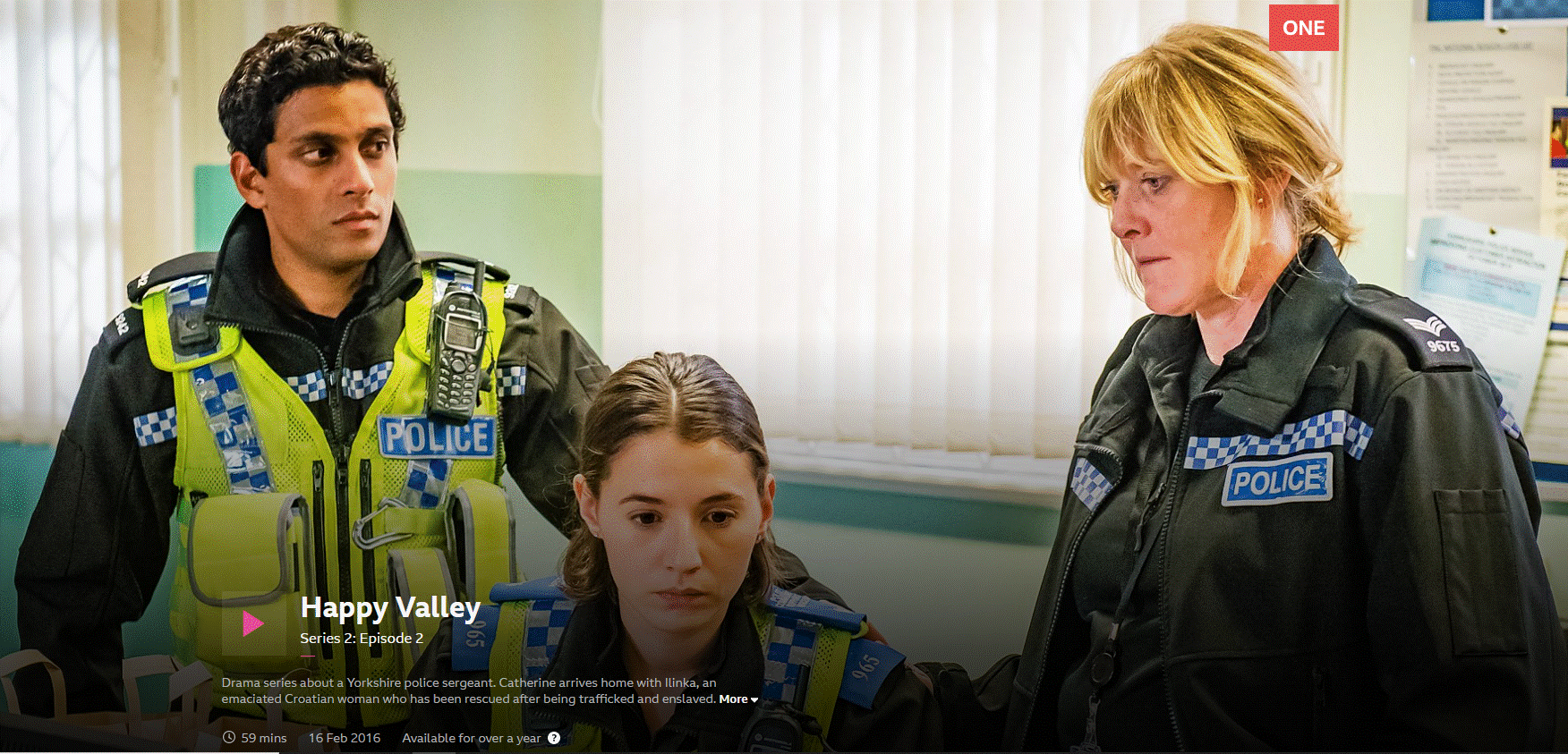


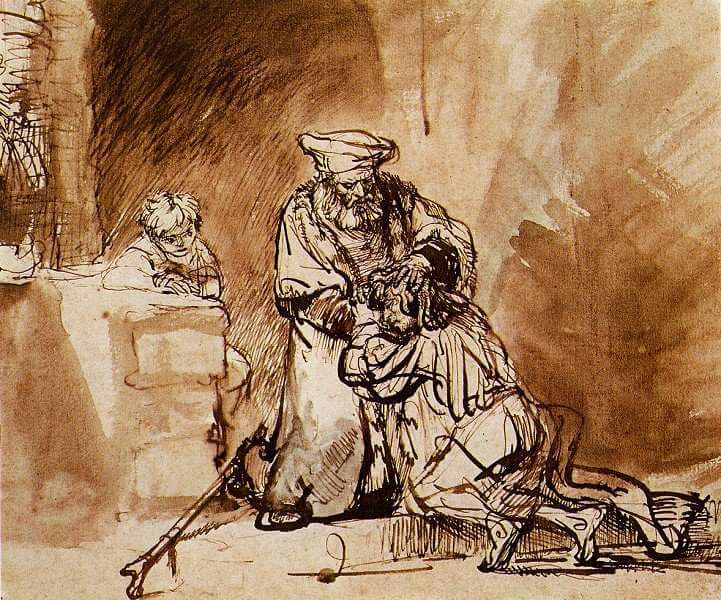


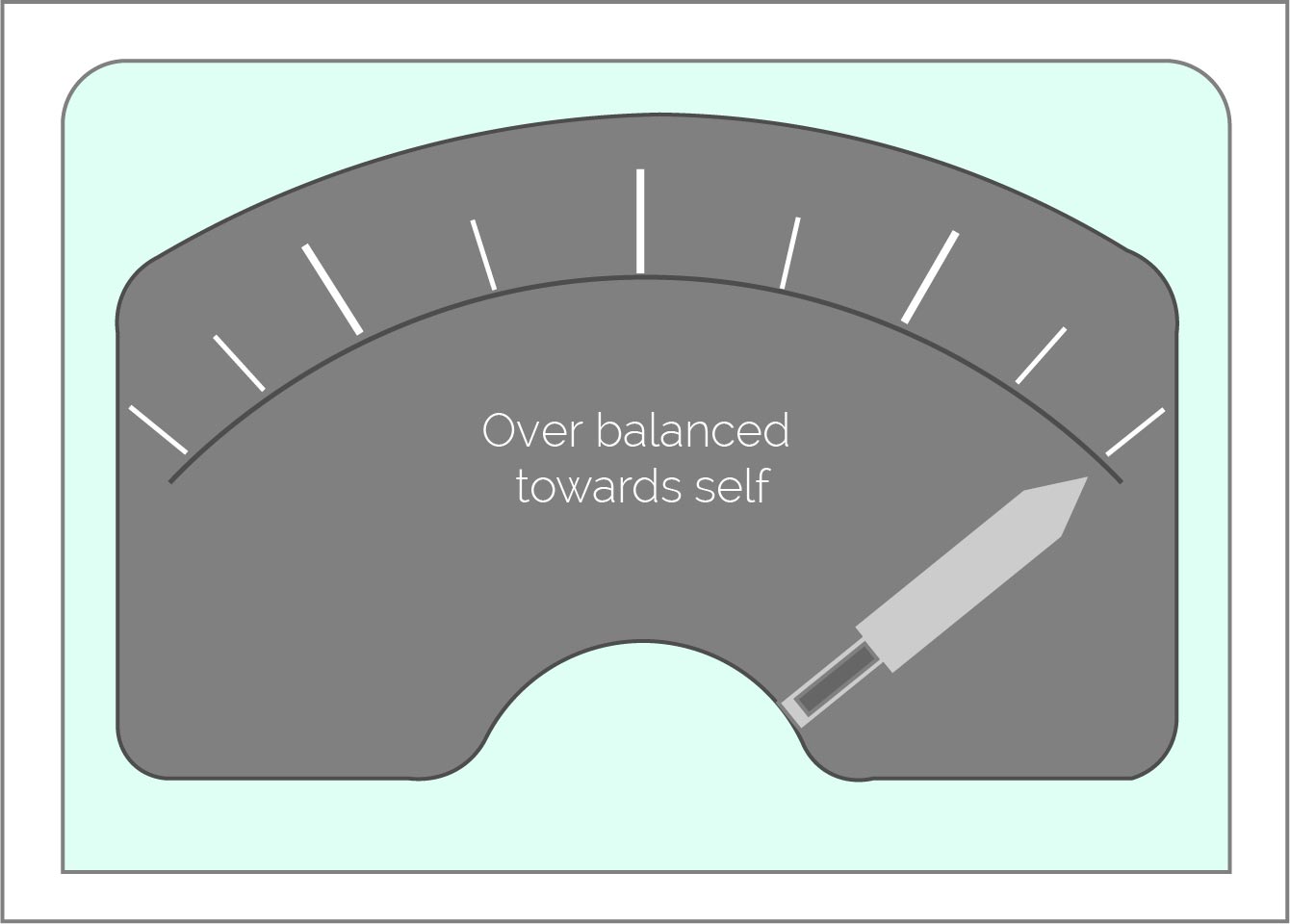
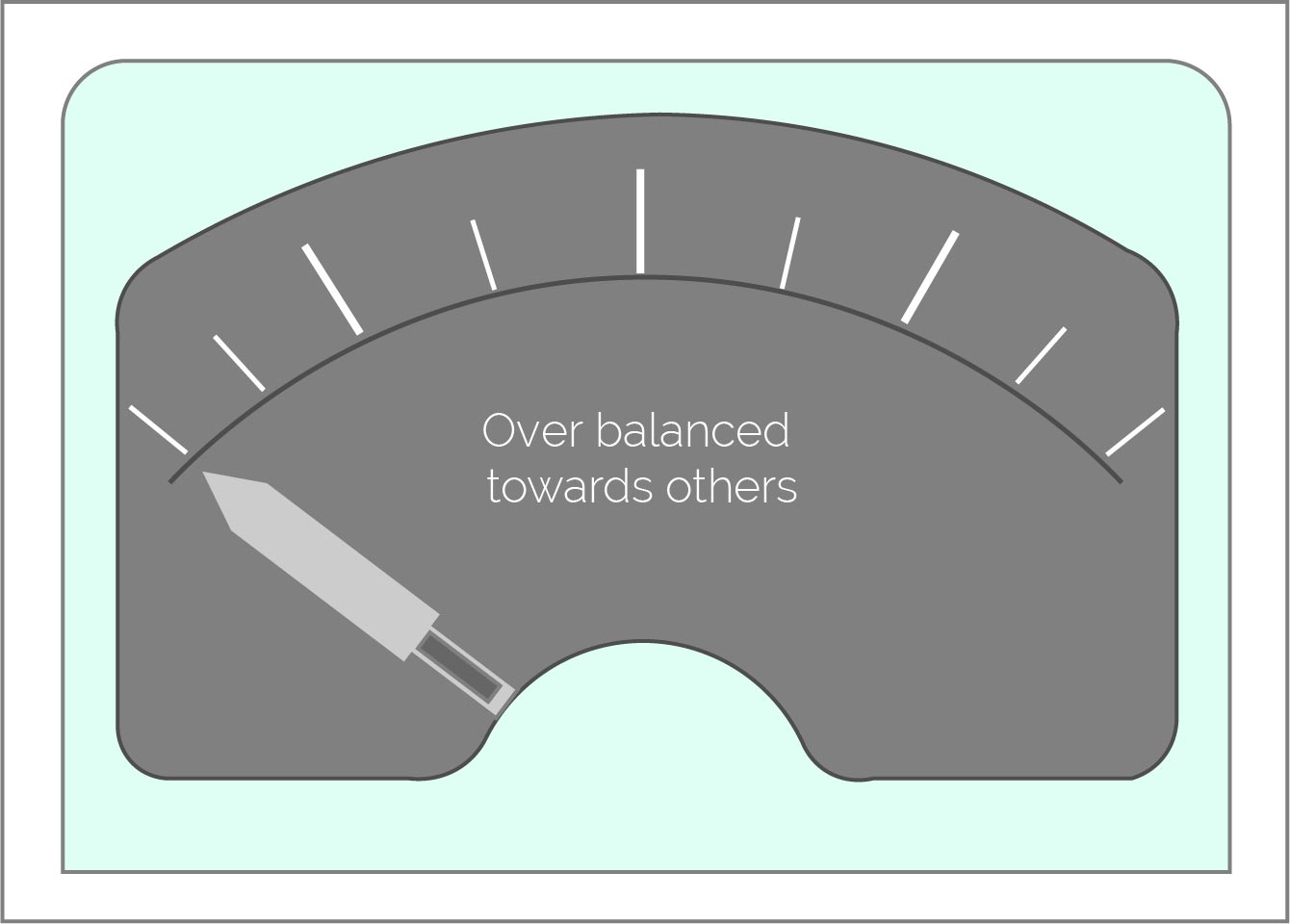
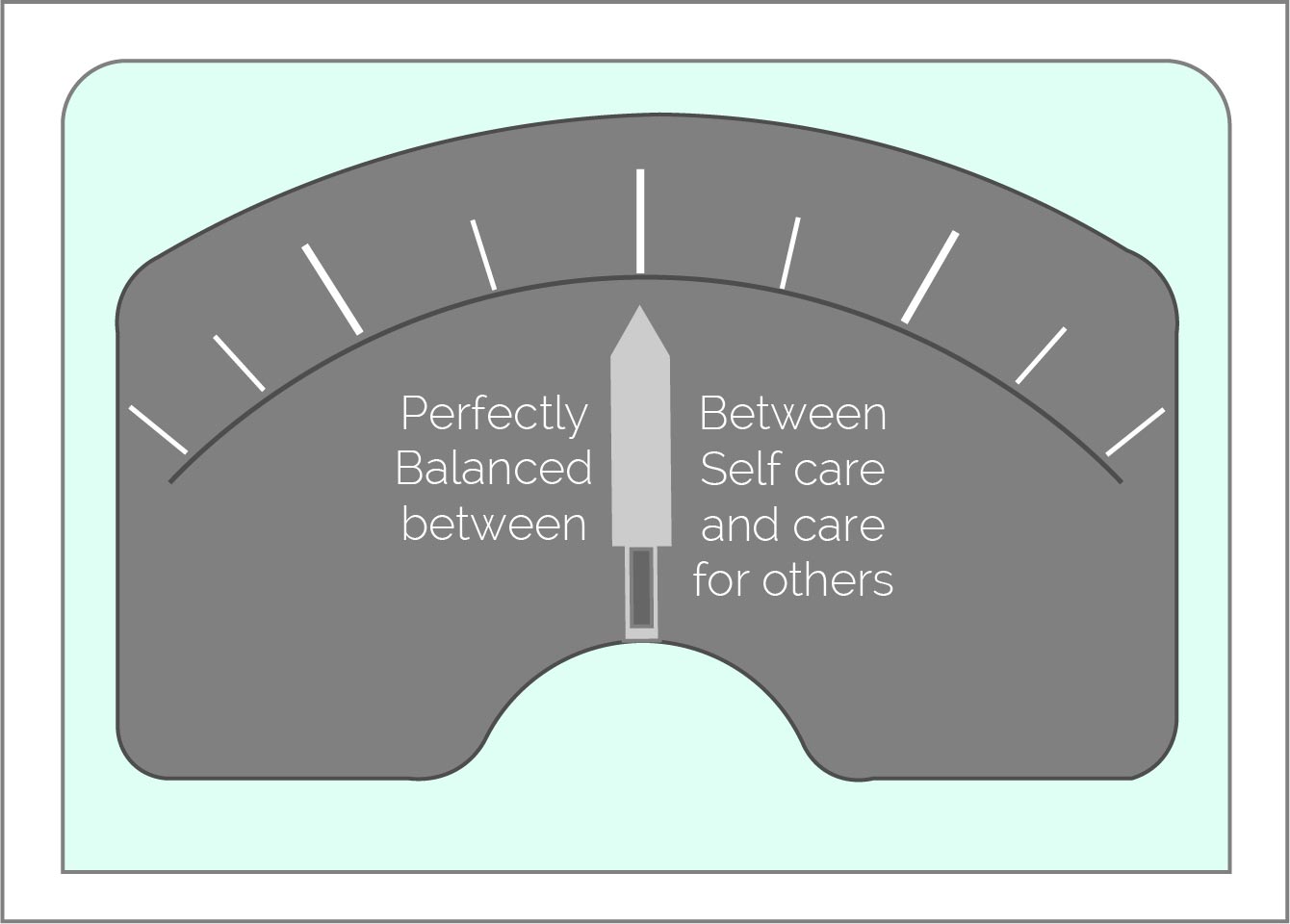



 Addiction in families is an issue as old as addiction itself and this is the first in a series of articles relating to the family. It will offer lots of practical help and things you can do to improve the family health. You could start by downloading my ebook
Addiction in families is an issue as old as addiction itself and this is the first in a series of articles relating to the family. It will offer lots of practical help and things you can do to improve the family health. You could start by downloading my ebook 
 When there is addiction in families they tend to focus on the addict. It is so important for your health as a family that you set your focus as something else! Individually your focus should be your own growth and development as a person. As a family your focus should be to develop harmony and intimacy. You will learn more about each other including your vulnerability and difficulty. Focusing on anything other than your addict tells you how much you have been affected by this issue.
When there is addiction in families they tend to focus on the addict. It is so important for your health as a family that you set your focus as something else! Individually your focus should be your own growth and development as a person. As a family your focus should be to develop harmony and intimacy. You will learn more about each other including your vulnerability and difficulty. Focusing on anything other than your addict tells you how much you have been affected by this issue.